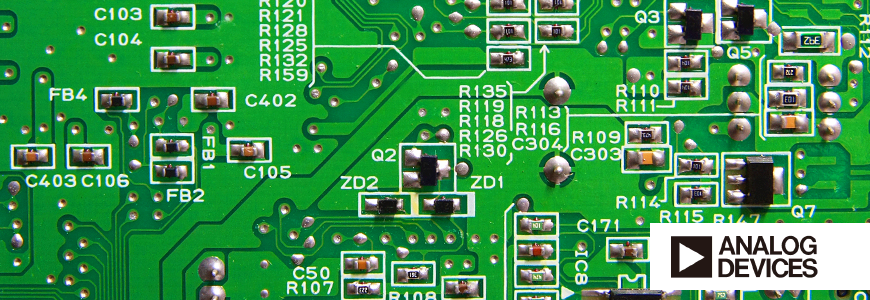Latest Switching Regulator Solutions to Reduce Ripple

This article introduces the latest switching regulator solutions to reduce ripple.
Switching Regulator Ripple Voltage Equation
When digital circuits handle high-speed signals, the jitter requirements become stricter, so it is necessary to reduce the ripple voltage, which affects the jitter characteristics. This time, we will consider how to reduce the ripple in the switching regulator, which affects the jitter characteristics.

VRipple: Ripple voltage
ΔIL:Ripple current of the inductor
ESR:ESR of the output capacitor
fSW:Switching Frequency
COUT:Capacity of output capacitor
The ripple voltage of the switching regulator can be expressed as shown above.
From this equation, it can be seen that the ripple increases as the ripple current (Δ IL) of the inductor increases.
The inductor ripple current is defined as 40% of the current required by the load.
Therefore, as the current value required by digital circuits such as FPGAs increases, the ripple increases.
Since it is not possible to reduce the ripple current of the inductor at a time when the low voltage and large current are accelerating. so, it is necessary to reduce the ripple voltage from other items of the above equation.
To reduce the switching regulator ripple voltage
The three items other than the ripple current of the inductor in the above equation are as follows.
1. ESR of the output capacitor (ESR)
2. Capacity of output capacitor (Cout)
3. Switching Frequency (fsw)
By adjusting these 3 items, the ripple voltage can be reduced.
1. The ESR of the output capacitor increases in proportion to the ESR, as shown by the "ripple current xESR" in Equation 1. Therefore, it is possible to reduce the ESR by using a ceramic capacitor with a low ESR.
2. Since the output capacitor capacity is included in the denominator of Equation 1, it is understood that the ripple is reduced by increasing the output capacitor capacity. To increase the capacity, it can be realized by mounting a large number of ceramic capacitors. However, since the board area is increased and the cost is increased, the number of units to be mounted should be minimized.
3. As for the switching frequency, since it is also included in the denominator of Equation 1, the ripple becomes smaller by increasing the switching frequency. However, in general, when the switching frequency is increased, the switching loss becomes larger and the efficiency decreases. Therefore, it is necessary to consider increasing the frequency while checking if there is any problem with the efficiency.
Figure 1 shows the ripple voltage and inductor current of the LTC3616 synchronous rectifier DC / DC converter with a very small ripple of a few millivolts.

Figure 1: ripple and inductor current
Switching frequency and efficiency
When the switching frequency is increased, the switching loss increases and the efficiency decreases.
A few years ago, 2MHz was the highest switching frequency, and the latest devices are available in 4 to 5MHz.
Figure 2 shows the switching frequency - efficiency curve of the LTC3616 synchronous rectifier DC / DC converter.
When the switching frequency is 1 to 2MHz, the efficiency peaks and decreases gradually to 4MHz. However, even at 4MHz, the efficiency is 90%.

Figure 2:switching frequency - efficiency
The following is a list of monolithic synchronous buck regulators with switching frequencies adjustable up to 4MHz.
By using this product, you can design the circuit while reducing the ripple and suppressing the jitter component of the digital circuit.
| Part # | Product Features | Input Voltage Range |
|---|---|---|
| LTC3565 | 1.25A, Monolithic synchronous rectifier regulator | 2.5~5.5V |
| LTC3600 | 1.5A Monolithic synchronous rectifier regulator with 1 resistor | 4~15V |
| LTC3601 | 1.5A, Monolithic synchronous rectifier regulator | 4~15V |
| LTC3604 | 2.5A, Monolithic synchronous rectifier regulator | 3.6~15V |
| LTC3412A | 3A, Monolithic synchronous rectifier regulator | 2.25~5.5V |
| LTC3623 | ±5A, Monolithic synchronous rectifier regulator | 4~15V |
| LTC3605A | 5A, Monolithic synchronous rectifier regulator | 4~20V |
| LTC3617 | ±6A Monolithic synchronous rectifier regulator for DDR termination | 2.25~5.5V |
| LTC3616 | 6A, Monolithic synchronous rectifier regulator | 2.25~5.5V |
| LTC3418 | 8A, Monolithic synchronous rectifier regulator | 2.25~5.5V |
Note! Even if you use a good product, the ripple is large
By using a product with a switching frequency of 4MHz, it is possible to obtain a fine voltage as small as the ripple voltage shown in Fig. 1. However, as described in the latter part of the article on the design method of the switching regulator, if the pattern design (artwork) of the substrate is wrong, the desired ripple waveform cannot be obtained.
Once a large switching noise is generated in the ripple caused by the pattern design of the circuit board, it may not be possible to remove it by adding a capacitor. Be sure to proceed with the design referring to the manufacturer's recommended pattern.
To minimize layout impact
The noise caused by the inductance component of the wiring pattern or the inductance component of the IC lead or the bonding wire caused by the wiring on the board affects the ripple voltage.
A solution that minimizes this inductance component is Analog Devices's μ Module.
The product lineup for the 4MHz switching frequency is as follows. Recommended for those who do not want to spend time on layout design or want to build a system with as little ripple as possible.
| Part # | Product Features | Input Voltage Range |
| LTM4622A | Dual 2A or single 4A step-down DC / DC μ Module regulator | 3.6~20V |
| LTM4622 | Dual 2.5A or single 5A step-down DC / DC µ Module regulator | 3.1~20V |
| LTM4623 | 3A Buck DC/DC μModule Regulator | 4~20V |
| LTM4625 | 5A Buck DC/DC μModule Regulator | 4~20V |

